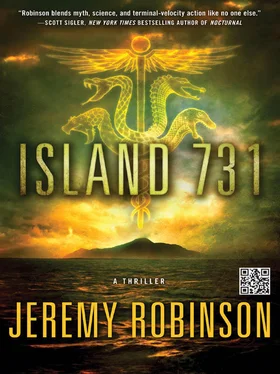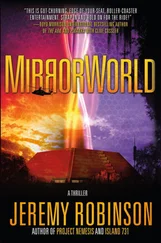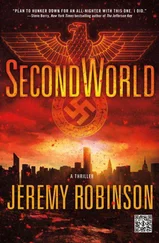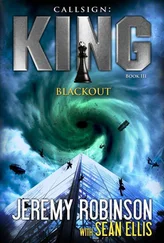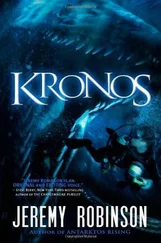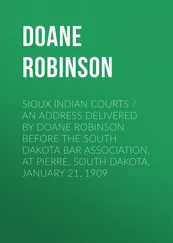“Get this,” she said to Bray, waving him closer. She finished the cut and spread the organ open. A rainbow of colors greeted them. She reached in and scooped out a handful of the undigested meal. “Plastic. It’s all plastic.”
She dug out two more handfuls. Most of the plastic chips were unidentifiable globs, stuck together by gelatinous goo and undigested fish parts, but Hawkins saw a bottle cap, a scissor handle, and what looked like a full spool’s worth of dental floss. The items seemed random, unconnected, but all had one thing in common: They were trash, either thrown into the ocean intentionally or lost by some sunken cargo ship.
“Likely cause of death is starvation,” Joliet said, reaching into the open cavity once more. “The stomach filled with debris over time and eventually became so packed with indigestible particles that food could no longer fit. The disfigured body was bad enough, but this is…” Joliet’s forehead scrunched up. “Hold on. Something’s stuck in here.” She tugged at something, but couldn’t pull it free. “Can I have the pliers?”
Hawkins picked up the tool and handed it to Joliet. He leaned in closer, sour stomach all but forgotten. This is what they’d been looking for. No one could deny the damage being done to the ocean once they saw this video. That the specimen was a relatively cute creature helped, too. If this were a shark, some people might actually cheer.
“Got it,” Joliet said. She pursed her lips and pulled. “It’s really stu—”
Whatever it was came free and Joliet spilled backward. Hawkins caught her with an arm under her back. But neither of them commented on the fall, or quick save. Both sets of eyes were on the object clutched in the pliers’ grip.
“What the hell is that?” Hawkins asked, standing Joliet back up.
The object looked like a plastic cube. On its base were four stainless-steel prongs, each tipped with a bit of torn stomach lining. A thin, five-inch-long, black wire emerged from one side. And what looked like a small LED light sat on top of the device.
“I think it’s a transmitter,” Bray said. “Radio tracker. Gives off a pulsing signal.”
“Inside a turtle?” Kam said. “Is that unusual?”
Joliet raised a single eyebrow at Kam. “Are you serious?”
The kid just shrugged.
“It looks like it was designed to be ingested,” Hawkins observed. “Those hooks kept it planted to the stomach wall. But the light’s not on. Must not be working.”
“I can open it up,” Kam said. “See how it works. Maybe find some clue about who made it on a circuit board or something?”
“That’s actually a really good idea,” Bray said.
They were right. Kam was the perfect man for the job.
“Just take off the—” Kam wiggled a finger at the bits of stomach lining clinging to the barbs.
“I think Kam is asking the right thing. Who would have done this to an endangered species? Or really any species?” Joliet asked. “And why?”
“I think I know,” Hawkins said. With all eyes, and the camera, on him, he picked up the red plastic band. “Whoever put the tracker in the turtle wanted to be able find it again. For some reason, the tracker failed and the loggerhead grew to adulthood. But look at the size of the band around its waist. It’s small. And the turtle would have been small when it first got stuck in the band. The tracker wouldn’t have fit in its stomach at the time, let alone down its throat. I think the turtle was kept in captivity until it was large enough for someone to shove that tracker down its throat and attach it to the stomach lining. The turtle might have been killed by the plastic it ate, but the deformation was done on purpose.” He looked Joliet in the eyes. “This turtle was an experiment.”
The storm arrived sooner than expected. After hastily bagging and tagging the loggerhead’s internal organs and putting the disassembled creature on ice, Hawkins returned to his quarters with Bray. Not because he wanted to, but because Drake had ordered all nonessential crew to “weather out the weather”—his words—in their berths with close access to the head. In other words, he didn’t want any of them puking on his ship. Of course, confining the crew to their quarters, which were located at the bow of the ship, almost guaranteed seasickness.
The room canted at a sharp angle.
“Oh, good God,” Bray said, clutching the mattress of his lower bunk.
Hawkins typically slept on the upper bunk, but he didn’t feel like being catapulted if a wave struck the ship’s side. He stood across the small room, holding on to the wall-mounted desk for support. As the ship angled up a wave, Hawkins bent his right knee and leaned into it, keeping himself more or less upright. “You’d feel it less if you stood up. Let your inner ear adjust to the tilt.”
“You going to do that all night?” Bray asked.
Hawkins grinned. He’d spent a lot of time on the ocean as a boy. Even these strong waves wouldn’t make him seasick. Bray, on the other hand, had been on a few whale watches in his lifetime and not all of them had turned out well. His first few days aboard the Magellan had been… messy, but he’d gotten his sea legs. Until now. “You think you’re going to sleep?”
Bray clutched his eyes shut. “I just need to get used to the motion, that’s all.”
“C’mon, it’s not that bad,” Hawkins said as the bow began to lower. He shifted his weight in toward the ship’s aft. The Magellan crested the wave and dropped so fast that even Hawkins felt his stomach twist.
Bray groaned.
“I was thinking about going to get some raw clams,” Hawkins said. “Want some?”
“I hate you,” Bray said, but he couldn’t hide his grin.
As the ship entered the trough between waves, Hawkins’s mind returned to the loggerhead dissection. That the stomach showed evidence of environmental damage was horrible, but fantastic for their cause. But the plastic band constricting the turtle’s midsection being part of some kind of experiment took the wind out of their sails. It would have made a powerful image. And sure, they could still use it, but it wasn’t quite ethical. But if it helped save the environment, and through its protection, human lives, perhaps omitting the existence of the tracking device was defendable, if not noble. Then again, someone had performed a horrible experiment on an endangered species. The park ranger in him couldn’t let that slide. Someone had to be brought to justice.
“You’re not even here, are you?” Bray asked.
Hawkins realized they’d gone over another wave. “Just thinking. About the loggerhead. About the radio tracker. Have you ever heard of anything like that?”
“Outside of the low-IQ kids throwing frogs at chain-link fences, no. And they have stupidity as an excuse.”
Hawkins gave a nod. “The plastic band and tracker had to have been done by the same person. It was intentional. The question is, why?”
“People have done a lot of screwy things in the pursuit of knowledge,” Bray said. “And I’m not just talking animals. I’ll just focus on my neck of the woods. Did you know that the Atomic Energy Commission and Quaker Frickin’ Oats gave the residents of Fernald, Mass—my hometown—breakfast cereal with radioactive tracers?”
Hawkins didn’t. It sounded unbelievable.
“My grandfather died of throat and stomach cancers before I was born. Big shocker there, right? The U.S. Navy had a Harvard biochemist inject sixty-four prisoners with cow blood. And, get this, Oak Ridge Labs injected eleven patients— patients —at the Massachusetts General Hospital in Boston with uranium . The United States has a long history of injecting foreign elements into peoples’ bodies to find out what will happen. Sure, sometimes they find a cure to something, but it’s usually accidental.”
Читать дальше
